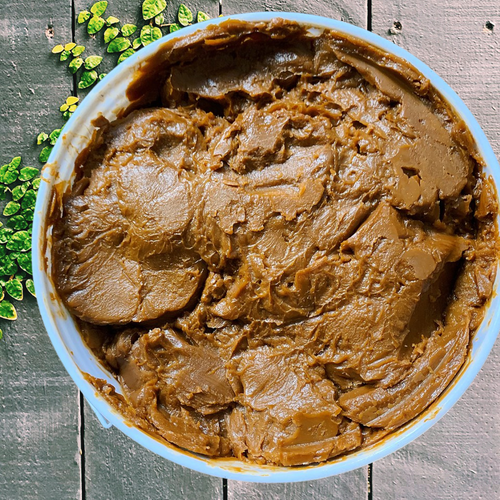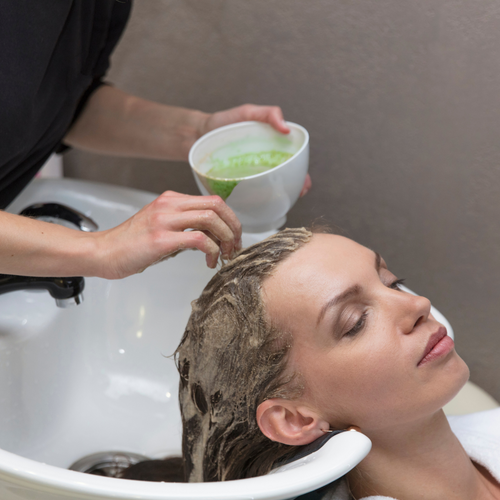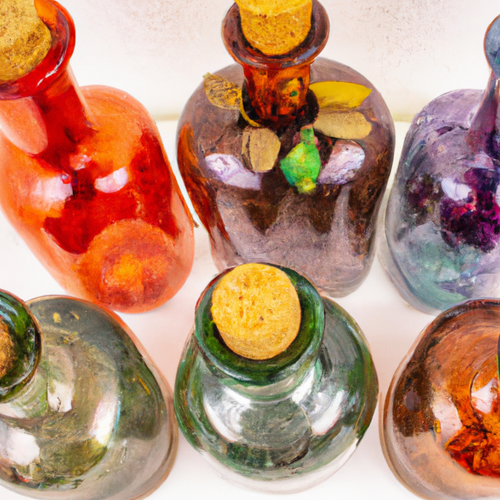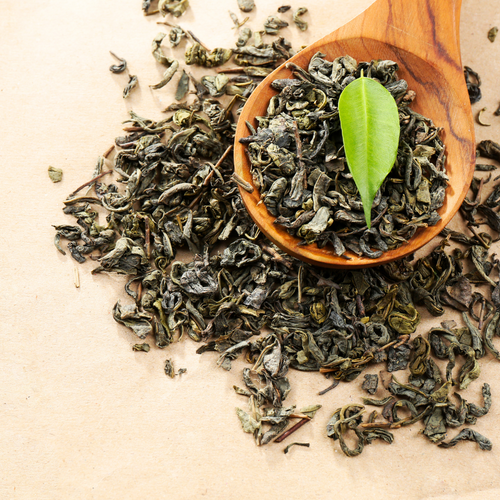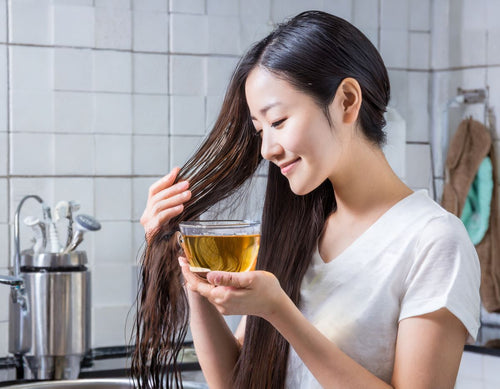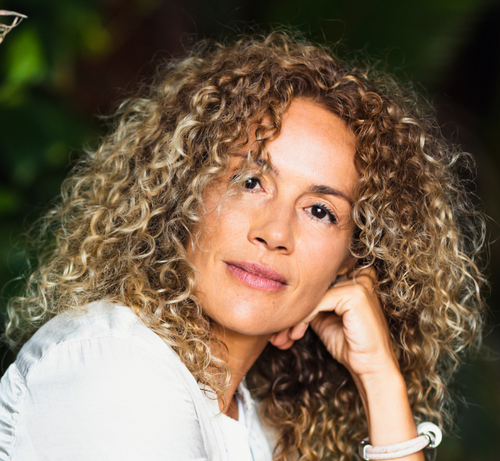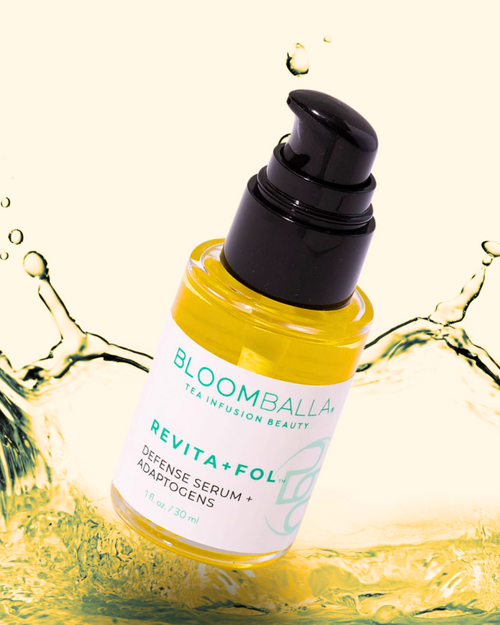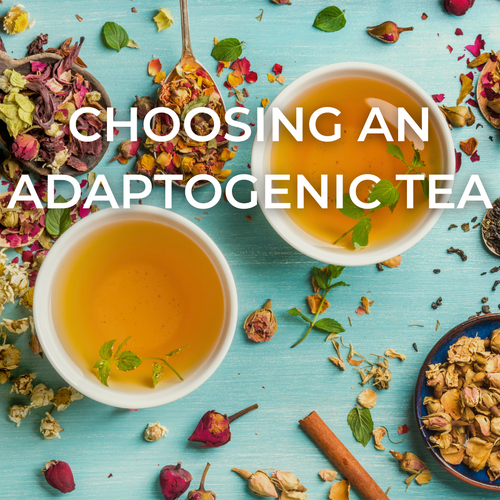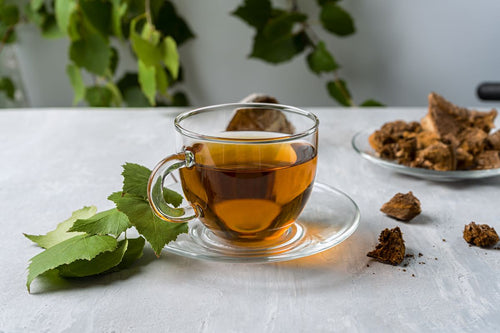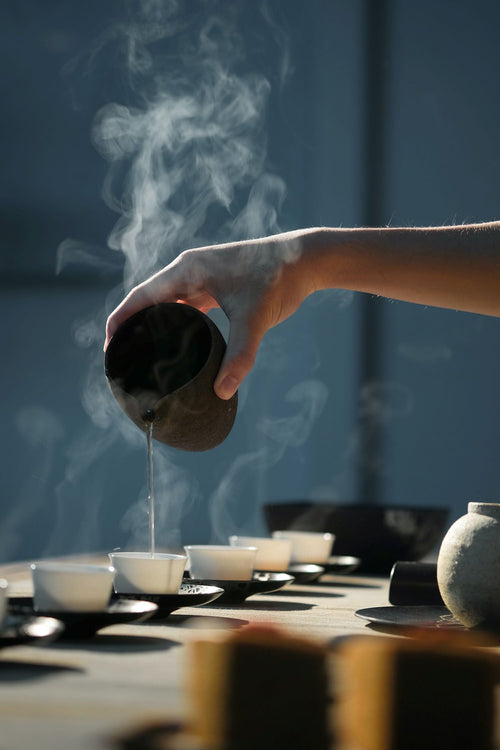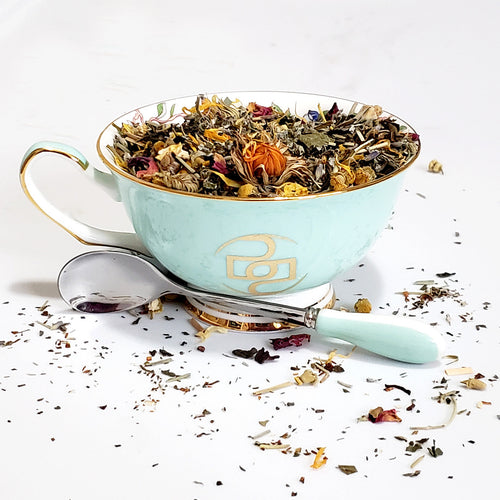Green tea thinning hair — it’s a phrase that’s popping up everywhere from beauty blogs to dermatology forums. But can your favorite cup of calming tea really do more than reduce stress? The answer is a resounding yes.
Green tea has quietly become a hero ingredient for people struggling with thinning hair — especially those navigating the hormonal shifts, stressors, and lifestyle changes of midlife. Thanks to its antioxidant, anti-inflammatory, and hormone-balancing properties, green tea can support a healthier scalp and fuller hair.
In this post, we’ll explore the science behind green tea and hair growth, how to use it (both internally and externally), and why it’s especially helpful for midlife — though not only for midlife. Whether you’re postpartum, perimenopausal, or just overwhelmed with stress, this ancient botanical may be the boost your hair (and mood) needs.
Why Is Hair Thinning So Common — Especially in Midlife?
Thinning hair is one of the most frustrating parts of aging — and yet, it’s incredibly common. By midlife, over 50% of women report noticeable thinning or shedding. Hormonal changes, increased cortisol from chronic stress, nutritional deficiencies, and slower cell turnover all play a role. For many women, the first signs appear at the temples or crown, often linked to shifting estrogen and rising androgens.
Stress can also shrink hair follicles and send more strands into the resting (telogen) phase — especially if you're burning the candle at both ends.
This is where green tea shines.
How Green Tea Supports Hair Health
Green tea (Camellia sinensis) contains potent bioactive compounds that benefit hair from root to tip — both when you drink it and when you apply it topically. It’s especially known for its high levels of epigallocatechin gallate (EGCG), a polyphenol with hair-protective superpowers.
Here’s how it works:
✅ Blocks DHT: The Hormone Behind Thinning Hair
Dihydrotestosterone (DHT) is a byproduct of testosterone that shrinks hair follicles and causes androgenetic alopecia (a leading cause of midlife hair loss). EGCG in green tea helps inhibit the enzyme 5-alpha reductase, which converts testosterone into DHT.
Less DHT = less follicle miniaturization.
✅ Antioxidant & Anti-Inflammatory Protection
Green tea's polyphenols act like a shield against oxidative stress and inflammation, two major contributors to scalp aging and follicle dysfunction. Antioxidants protect the dermal papilla (where the hair follicle grows) and reduce free radical damage caused by UV exposure and pollution.
✅ Stimulates Blood Flow to the Scalp
Green tea contains natural caffeine and vasodilatory compounds that boost circulation, helping to deliver oxygen and nutrients directly to the hair root.

How to Use Green Tea for Thinning Hair
1. Drink It Daily
Sipping 1–2 cups of organic green tea per day provides a steady dose of EGCG and catechins that circulate systemically to support scalp health from the inside out.
2. Use a Green Tea Hair Rinse
A rinse delivers benefits directly to the scalp. It can help with buildup, soothe irritation, and support follicle function — especially when left on for a few minutes before rinsing.
How to do it:
- Steep the tea rinse of your choice
- Cool completely
- After shampooing, pour over scalp and massage gently. Apply a conditioner of your choice.
- Let sit 5–10 minutes before rinsing
🧖🏽♀️ Bonus: Our limited edition adaptogenic green tea rinse is already pre-made for you and combines green tea with stress-balancing herbs like rosemary, lavender, nettle, peppermint and amla for added hormonal and adrenal support.
3. Use a Green Tea-Infused Serum or Treatment
Look for serums with green tea extract or EGCG high in the ingredient list — ideally paired with adaptogens like panax ginseng, ashwagandha, or reishi for added stress resilience.
Why Green Tea Is Great for Midlife Hair (But Not Just Midlife)
While green tea helps at any age, it’s especially powerful during midlife when:
- Estrogen declines and DHT sensitivity rises
- Hair density decreases
- Stress levels peak
- Scalp health becomes more vulnerable
But even if you’re in your 20s or 30s and dealing with postpartum shedding, PCOS, or chronic stress, green tea may offer calming, restorative support.

What About Adaptogens?
We’d be remiss not to mention how beautifully green tea pairs with adaptogens — herbs that help your body adapt to stress and restore hormonal balance.
Some powerful allies:
- Ashwagandha: Calms cortisol and supports thyroid function
- Reishi mushroom: Anti-inflammatory and immune-supportive
- Tulsi (Holy Basil): Balances hormones and soothes nerves
- Nettle leaf: Mineral-rich and nourishing for the scalp
Our Revita+Fol antioxidant anti-stress scalp care serum uses adaptogens synergistically to promote scalp resilience, reduce shedding, and help you feel grounded.
Before & After Hair Growth

Green Tea for Hair: What It Does & Why It Works
✅ Reduces DHT (fights hormone-related shedding)
✅ Boosts circulation to hair roots
✅ Fights free radicals that age the scalp
✅ Calms inflammation and itching
✅ Promotes longer hair growth phase
✅ Clarifies scalp and balances oil
✅ Supports whole-body stress resilience
FAQs About Green Tea & Hair Health
What’s the best time to drink green tea for hair benefits?
The best time is mid-morning or early afternoon. Drinking it too late may affect sleep due to its natural caffeine content. For best absorption, drink it between meals.
Are there side effects to drinking green tea?
For most people, green tea is very safe. However, it does contain caffeine and tannins, which may cause sensitivity, stomach upset, or iron absorption issues in some people. If you’re iron-deficient or very sensitive to caffeine, limit to 1 cup per day or opt for decaffeinated varieties.
Is a green tea rinse better than drinking it?
They serve different purposes! Drinking green tea supports your scalp and follicles from within, while rinsing delivers direct topical benefits like soothing, clarifying, and stimulating circulation. Ideally, do both.
Can green tea help with dandruff?
Yes. Its antimicrobial and anti-inflammatory properties can calm a flaky, irritated scalp and reduce Malassezia (the yeast involved in dandruff).
How long does it take to see results?
Consistency is key. Most users report noticeable changes in scalp comfort and shedding in 4–6 weeks, with improved density over 3–6 months of regular use.
Final Thoughts
Thinning hair doesn’t have to be something you simply accept — especially when nature offers so many tools for balance and renewal. Green tea is one of the gentlest and most science-backed botanicals available, especially when paired with adaptogens that reduce stress and restore hormonal equilibrium.
Whether you're entering perimenopause, bouncing back from a stressful season, or simply want fuller, more resilient hair — consider adding a little green tea (and a little ritual) to your hair care routine.




